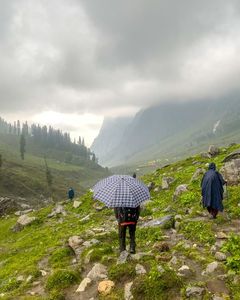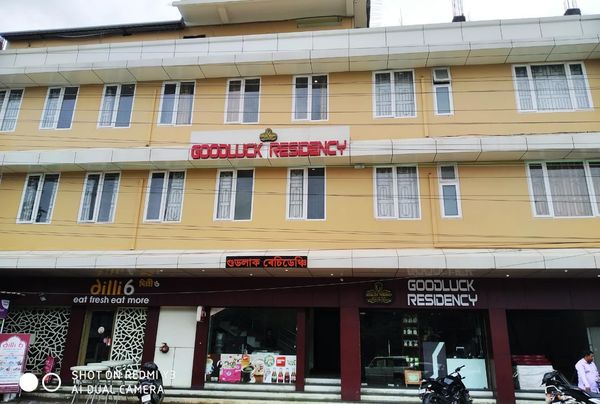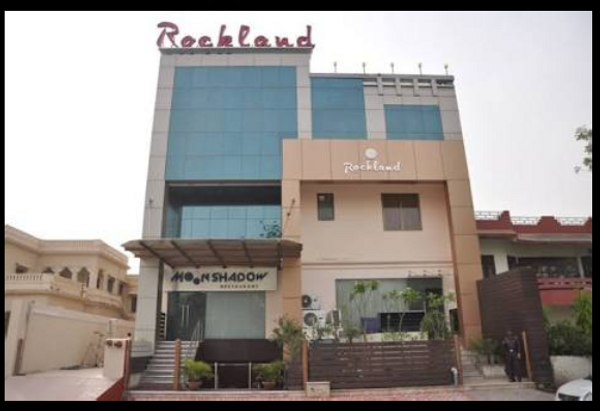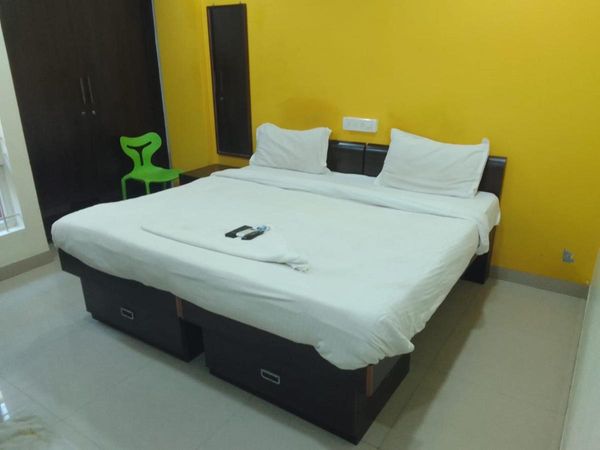Hampta Pass in the Monsoon: What to Pack, Wear and Expect
 Deepanshu Negi
17 Jul, 2025
10 mins read
66
Deepanshu Negi
17 Jul, 2025
10 mins read
66

Hampta Pass is one of the most popular treks in Himachal Pradesh. It connects the beautiful Kullu valley with the barren landscape of Lahaul. During the monsoon season, the trek becomes more thrilling and challenging. Rainfall brings lush greenery, blooming wildflowers and foggy views that look straight out of a dream. But trekking in the rain also needs extra preparation. In this article, we will guide you on what to pack, what to wear and what to expect on the Hampta Pass trek during the monsoon season.
Why Choose Hampta Pass in Monsoon
Many trekkers wonder if it is safe or even worth it to go for the Hampta Pass trek during the monsoon months, usually from July to early September. The truth is, the trail becomes even more beautiful during this time. Forests turn greener, meadows are filled with wildflowers and waterfalls are in full flow. The contrast between the green Kullu valley and the dry Lahaul side is even more striking after the rains.
The Hampta Pass trek in monsoon offers raw, untouched beauty that feels straight out of a storybook. If you are ready for a little challenge, this trek will reward you with unforgettable memories.
What to Pack for Hampta Pass Trek in Monsoon
Packing smart is the first step to a successful trek. Here is a checklist of items you must carry.
Backpack
Carry a strong and waterproof backpack with rain cover. A 40 to 50-liter backpack is good enough. Make sure it is comfortable and has padded straps.
Clothing
Avoid cotton clothes as they absorb water and take a long time to dry. Use quick-dry and moisture-wicking clothes. Carry three sets of full-sleeve T-shirts and trekking pants. One warm fleece or sweater is a must. Pack a down or padded jacket to stay warm at higher campsites.
Rain Protection
A high-quality raincoat or poncho is necessary. Also pack a rain cover for your backpack. If possible, carry waterproof pants or gaiters to keep your lower body dry.
Footwear
Good trekking shoes with ankle support and strong grip are important. In monsoon, trails can get muddy and slippery. Avoid sports shoes or casual footwear. Also pack an extra pair of floaters or sandals for crossing streams or relaxing at the campsite.
Socks
Carry at least four to five pairs of quick-dry socks. Wet socks can cause blisters and infections. Keep an extra dry pair for the night.
Personal Gear
A good quality headlamp with extra batteries is needed. Also pack a water bottle, small towel, sunglasses, lip balm and sunscreen. Even in monsoon, UV rays can harm your skin at higher altitudes.
Toiletries and Hygiene Kit
Pack toothbrush, toothpaste, toilet paper, biodegradable soap, wet wipes and hand sanitizer. Do not forget a small personal medical kit with basic medicines like painkillers, anti-diarrhea tablets, ORS, and medicines for altitude sickness.
Trekking Pole
This is very helpful in monsoon when trails are slippery. It gives balance and reduces pressure on knees.
Dry Bags or Zip Locks
Use them to pack your clothes and electronics like phone, camera and power bank. It helps keep your items dry even if water enters your backpack.
What to Wear on the Trail
Dressing in layers is the key to stay comfortable on the trail.
Base Layer
Start with a dry-fit T-shirt. Full sleeves help protect against sunburn and bugs.
Mid Layer
Add a fleece or a light woolen sweater. It will keep you warm in cold winds.
Outer Layer
Use a waterproof jacket or poncho. This will protect you from rain and wind.
Lower Body
Wear trekking pants made of quick-dry material. Avoid jeans or heavy cotton pants. Keep a waterproof layer handy in case of heavy rain.
Accessories
Wear a cap or hat for sun protection. Use a buff or scarf to cover your face during windy or dusty patches. Sunglasses with UV protection are helpful in high-altitude snow areas.
Footwear
Wear only proper trekking shoes with good grip. Wet rocks and mud can be very risky. Change socks every day to avoid blisters.
What to Expect During the Trek
Knowing what to expect will help you mentally prepare for the trek.
Weather Conditions
Expect rain, fog and cloudy skies during most of the trek. It may not rain every day but the trails will remain wet and muddy. Nights can be cold, especially near the pass. Carry extra layers for night stays.
Scenic Beauty
The monsoon brings life to the valley. Forests are thick and green. You will see wildflowers, waterfalls and clouds moving through the valleys. The contrast when you cross into Lahaul is amazing. From greenery to rocky terrain, it feels like entering another world.
Trail Conditions
Be ready for slippery paths and wet rocks. Some parts may be flooded or have small streams flowing through. You may need to cross rivers on foot, so pack sandals or floaters for that.
Bugs and Leeches
Lower altitudes like Jobra and Jwara may have leeches. Wear full clothes and check your shoes and socks often. Use salt or insect repellent if needed.
Altitude Sickness
Hampta Pass is at around 14,000 feet. Some trekkers may feel mild symptoms of altitude sickness. Drink lots of water, eat properly and walk at a steady pace. Inform your trek leader if you feel dizzy or unwell.
Camping Experience
Tents may feel damp during heavy rain. Make sure to keep your sleeping bag and clothes dry inside. Choose a good trekking agency that offers high-quality tents and sleeping arrangements.
Network and Connectivity
There is no mobile network after Jobra. Inform your family before starting the trek. Enjoy being disconnected and soaking in the raw beauty of the mountains.
Final Tips for Monsoon Trekking
- Start your day early. It usually rains in the afternoon.
- Carry snacks like dry fruits, energy bars and chocolates.
- Do not leave wet clothes inside the tent.
- Always follow your guide and stay on the trail.
- Respect nature and do not litter.
Conclusion
Hampta Pass in the monsoon is a beautiful and unforgettable experience. The rain turns the trail into a lush paradise and offers views that are rare in other seasons. But monsoon trekking needs planning and preparation. With the right gear, clothing and mindset, you can fully enjoy the beauty and adventure of this Himalayan trek. So pack your bag smartly, wear the right layers and be ready to experience the magic of Hampta Pass in the rains.
Written By:
Deepanshu Negi



Hotels at your convenience
Now choose your stay according to your preference. From finding a place for your dream destination or a mere weekend getaway to business accommodations or brief stay, we have got you covered. Explore hotels as per your mood.


